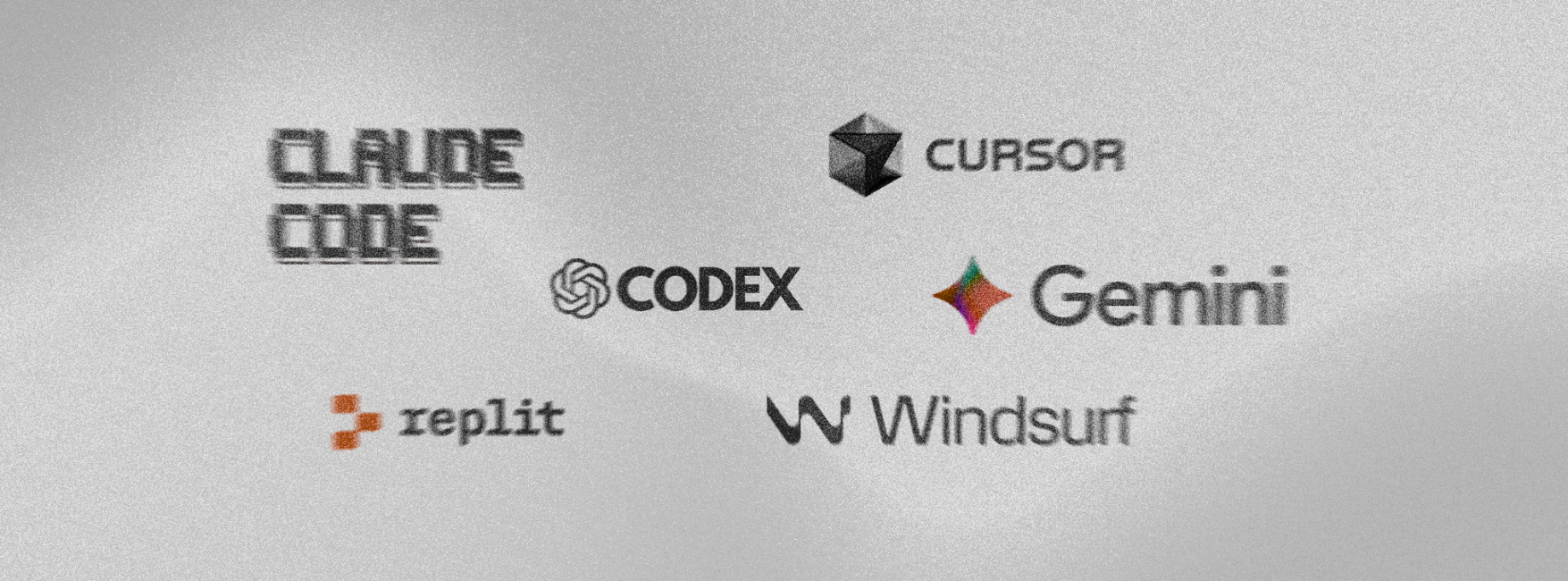Introduction
If you’ve been in the digital marketing world for more than five minutes, you’ve heard of SEO. I mean, when I started working in the field a few years ago, "SEO - Search Engine Optimization" was the first definition I wrote in my notebook.
It was all about the art of making Google love your website.
But the game has changed. Google isn't just a "search" engine anymore. And with the rise of AI chatbots, the very way people find information is transforming.
Enter a new, more powerful acronym: AEO.
Now, here's the thing. AEO can stand for two things, and both are critical:
Answer Engine Optimization: Optimizing for Google's features that provide direct answers.
AI Engine Optimization: Optimizing to be a source for AI platforms like ChatGPT and Perplexity.
You might be thinking, "Oh great, another buzzword to learn." But stick with us. This one is different. It’s less about gaming a system and more about becoming a genuinely helpful, authoritative voice that both Google and AI have to cite.
So, what exactly is AEO?
In simple terms, AEO is the practice of creating content that is the definitive, most helpful answer to a user's question, in a format that both people and machines love. Think about it. Why do most people search? They aren't just typing in random keywords. They’re asking questions.
"How do I fix a leaking toilet?"
"What's the best project management tool for a small team?"
"Why is my peace plant turning yellow?"
Old-School SEO was often about finding keywords and sprinkling them throughout a page.
Modern AEO is about finding a question and building a comprehensive, easy-to-understand resource around it.
Why does this matter more than ever? Two reasons:
1. Google's "Answer Engine": Google's goal is to keep users on its page by giving them the best possible answer instantly (in Featured Snippets, "People Also Ask," etc.). If your content does that, you win the prime spot.
2. The AI Revolution: Platforms like ChatGPT and Perplexity are synthesizing information from the web to create their own answers. If your content isn't in their training data or isn't structured for them to cite, you're invisible to a massive, growing audience.
How do AI Chatbots really work?
Can we know the secret to becoming their favorite source?
To really master AEO, it helps to understand how a platform like ChatGPT or Perplexity finds its answers. It’s less like a librarian fetching a specific book and more like a brilliant student writing a essay based on everything they’ve ever read.
Let's break down the process:
Step 1: The Massive "Reading List" (Training)
Before an AI can answer anything, it needs to learn. It's trained on a colossal amount of data from the public internet, think billions of web pages, articles, forum posts, and books. This is its "education." It learns patterns, facts, writing styles, and how to connect concepts from this data.
Example: During training, the AI might "read" thousands of articles about "project management software." It learns that words like "Asana," "Trello," "features," "pricing," and "integrations" often appear together. It doesn't "know" anything yet; it's just learning statistical relationships.
Step 2: You Ask a Question (The Prompt)
When you type "What's the best project management tool for a small marketing team?" into an AI, it doesn't "search" for a pre-written answer. Instead, it uses its training to predict the most likely, helpful sequence of words that would answer your question.
Step 3: The "Essay Writing" Process (Inference)
This is the key part. The AI starts generating an answer word-by-word, drawing upon all the patterns it learned during its training. It's essentially composing a new, original answer on the fly, synthesized from the vast amount of information it was trained on.
So, where does it get the information for its "essay"?
This is the core of AEO. The AI pulls from the sources it was trained on that are most relevant to your question. And this is where the data from our report gets really interesting:
- It Loves Real Talk: This is why Reddit dominates 40% of AI citations. AI models learned that Reddit threads often contain direct, human-experience-based answers to very specific questions. When you ask "Why is my peace plant turning yellow?", the AI will synthesize answers from gardening subreddits because that's where the most practical, experience-based advice lives.
- It Craves Authority: For factual or complex topics, the AI will lean on authoritative sources like Wikipedia, official documentation, and well-respected news sites. It's learned that these sources are generally trustworthy.
- It Needs Structure: This is where your website comes in. The AI heavily favors content that is easy for it to understand. Pages with clear headings, bullet points, and especially FAQ schema are like a well-organized textbook for the AI. It can quickly find the exact answer it needs to support its response.
Let's look at an example:
Your Question to ChatGPT: What's a good alternative to Trello for software developers?
What the AI does internally:
- Recognizes the key entities: "Trello" (a tool), "software developers" (an audience), "alternative" (a comparison).
- Scans its training data for the most relevant and authoritative sources discussing project management tools for developers.
- It might find a Reddit thread on r/softwaredevelopment where people discuss this exact topic.
- It might find a blog post from a tech company titled "Top 5 Trello Alternatives for Dev Teams" that has a clear comparison table.
- It then synthesizes these sources, writing a new answer that lists a few alternatives (like Jira, Linear, or ClickUp) and briefly explains why they are good for developers (e.g., "Jira offers robust sprint planning features," a point it likely found in multiple sources).
If your blog post is that well-structured, authoritative source, the AI will use it. If not, you're invisible.
This is why AEO isn't just about keywords. It's about making your content the most obvious, trustworthy, and easy-to-digest source for the AI's "essay" on your topic. You're not just optimizing for a ranking; you're optimizing to become a reference in the AI's mind.
What real marketers are saying about AEO
This isn't just us talking. The shift to AEO is happening organically, and a recent Reddit thread blew up with exactly this conversation. A marketer shared their biggest lesson after writing over 10,000 blogs, and it perfectly captures the essence of AEO.
They said: The goal is not to write a 'blog post.' The goal is to create a resource that solves a problem.
This single sentence is the heart of AEO. The comments were flooded with people agreeing, sharing their own experiences:
- One user noted that their most successful posts weren't the ones targeting high-volume keywords, but the ones that provided a definitive, step-by-step solution to a very specific problem.
- Another emphasized that content needs to be the "final answer", so good that after reading it, the user doesn't feel the need to click the "back" button and check other results.
- The consensus was clear: Depth and clarity beat shallow, keyword-stuffed content every single time.
The statistics back this up. Google's algorithms (like the helpful content update) now actively reward pages that demonstrate "EEAT", Experience, Expertise, Authoritativeness, and Trustworthiness.
But let's look at the hard numbers that prove this is the right path:
- Reddit Dominates AI: Reddit accounts for a massive 40.1% of all AI citations, making it a more influential source than Wikipedia. This shows AI craves real human discussion and problem-solving. (Source: Visual Capitalist)
- AI Traffic Converts Better: While it might only be 0.5-1% of your traffic now, visitors from AI platforms convert at 13-23x higher rates than traditional organic search. They're pre-qualified by the AI itself. (Source: Ahrefs, Semrush)
- Structure is Everything: A whopping 82.5% of AI citations link to pages with proper schema markup (like FAQPage). The bots need help understanding your content. (Source: PromptLayer)
The consensus is clear: Depth, clarity, and a helpful structure beat shallow, keyword-stuffed content every single time. But, how do you show that?
How to start with AEO
Ready to make your content more helpful to humans and AI? Here’s how to get started.
1. Become a question detective (and a reddit sleuth)
Your keyword research should now be "question research." Use tools like AnswerThePublic and Google's "People also ask." But don't stop there. Go to Reddit, Quora, and industry forums. Find the exact questions, phrasing, and pain points your audience is discussing. This is your content goldmine.
2. Structure for scanners, bots, and voice search
Use clear headings (H2, H3), bullet points, and numbered lists. But now, take it further:
- Start with a TL;DR: Add a "Too Long; Didn't Read" box at the top with the key takeaways. AI loves this.
- Implement FAQ Schema: Wrap your questions and answers in structured data. This is a direct signal to Google and AI that you have a direct Q&A.
- Use Speakable Schema: For voice search, mark up the parts of your content that are perfect for being read aloud.
3. Cover the entire user journey, not just one question.
Don't just answer "How to bake sourdough." Answer the next questions: "Why did my dough not rise?" or "How do I get a crispier crust?" Be the one-stop-shop. Create "comparison" content (e.g., "Tool A vs. Tool B") that AI frequently cites when users are in evaluation mode.
4. Build authority with evidence, not just opinions.
AI engines are trained to prioritize trustworthy sources. Cite original research, link to authoritative studies, and create detailed case studies. The more you can back up your claims with data, the more likely you are to be seen as a citable source.
5. Write for a human, but format for a machine.
The tone should be simple, human, and jargon-free, like you’re explaining it to a friend. But the underlying structure should be machine-friendly. Use schema, clean data, and a logical hierarchy. This is the core of modern AEO.
What if you're an agency? Implementing AEO for your clients
For agencies, this is a powerful shift. Your value is no longer just "we'll get you ranking for X keywords." It's "we will make you the most trusted and helpful resource for your customers and the AIs that serve them."
- Reframe Your Reporting: Show clients metrics that matter for AEO: time on page, reduced bounce rate, and, critically, tracking mentions and citations within AI platforms.
- Audit with New Eyes: Audit client content not just for keywords, but for its "citatation-worthiness." Does it have a clear TL;DR? Is there FAQ schema? Could it be the "final answer"?
- Sell the Outcome, Not the Output: You're not selling "8 blog posts a month." You're selling "8 comprehensive resources that will position you as the go-to expert and stop your prospects' searches in their tracks, whether they're searching on Google or asking ChatGPT."
Understand, define, and execute AEO
AEO isn't a passing trend. It's the natural evolution of SEO in a world where search is becoming conversational and answers are becoming instant. It forces us to be more human, more helpful, and more technically savvy.
The first step is to understand it. The next is to define what it means for your business. And the final step? To execute.
Feeling a little overwhelmed by the technical details of schema, AI profiling, and Reddit strategy? Well, we've already embraced this shift. We don't just optimize for yesterday's Google; we future-proof your content for the AI-powered answer engines of today and tomorrow.
Let's chat about how we can help you become the best answer on the internet, and inside every AI chat.






.svg)